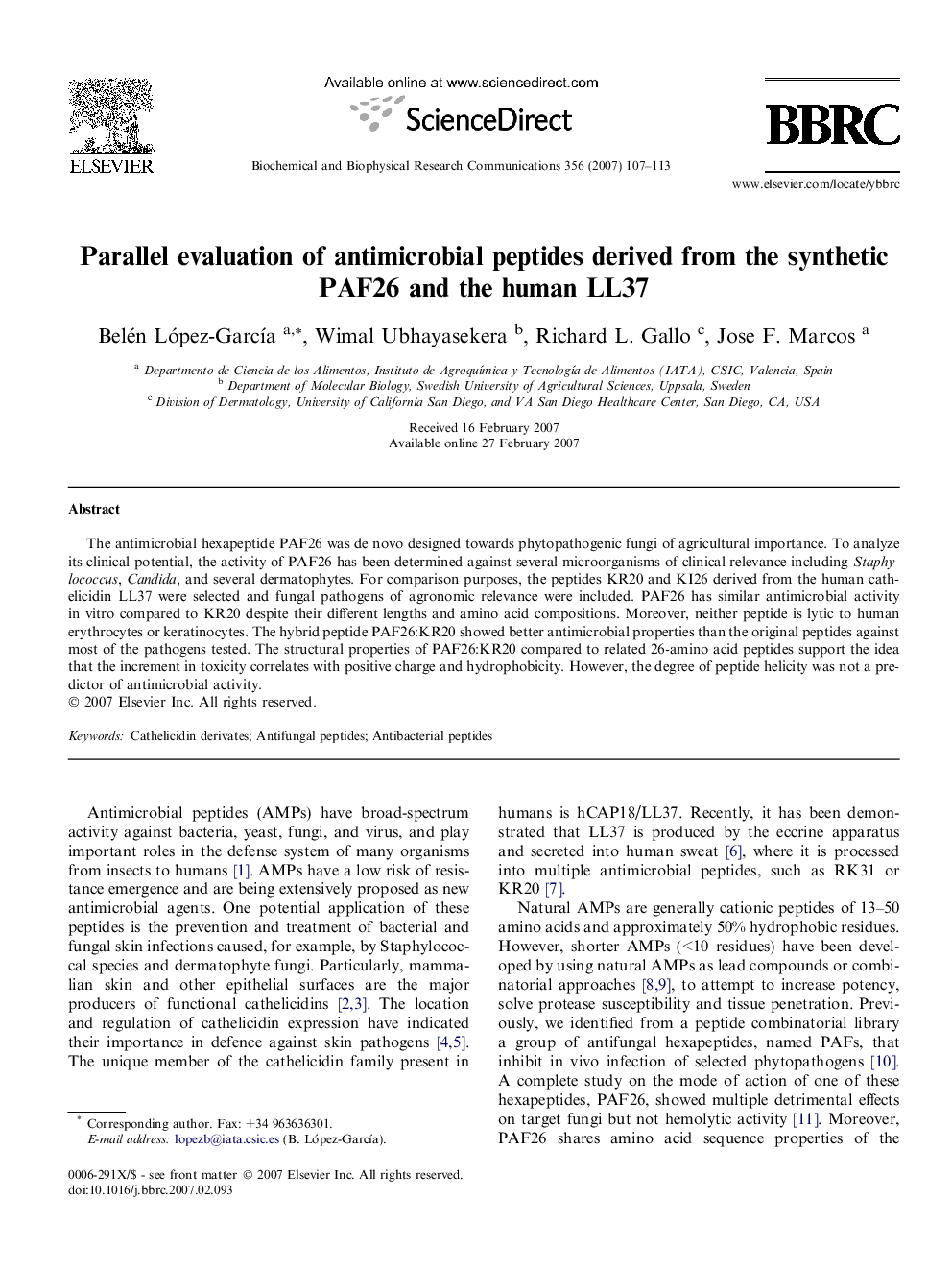| Article ID | Journal | Published Year | Pages | File Type |
|---|---|---|---|---|
| 1938633 | Biochemical and Biophysical Research Communications | 2007 | 7 Pages |
The antimicrobial hexapeptide PAF26 was de novo designed towards phytopathogenic fungi of agricultural importance. To analyze its clinical potential, the activity of PAF26 has been determined against several microorganisms of clinical relevance including Staphylococcus, Candida, and several dermatophytes. For comparison purposes, the peptides KR20 and KI26 derived from the human cathelicidin LL37 were selected and fungal pathogens of agronomic relevance were included. PAF26 has similar antimicrobial activity in vitro compared to KR20 despite their different lengths and amino acid compositions. Moreover, neither peptide is lytic to human erythrocytes or keratinocytes. The hybrid peptide PAF26:KR20 showed better antimicrobial properties than the original peptides against most of the pathogens tested. The structural properties of PAF26:KR20 compared to related 26-amino acid peptides support the idea that the increment in toxicity correlates with positive charge and hydrophobicity. However, the degree of peptide helicity was not a predictor of antimicrobial activity.
